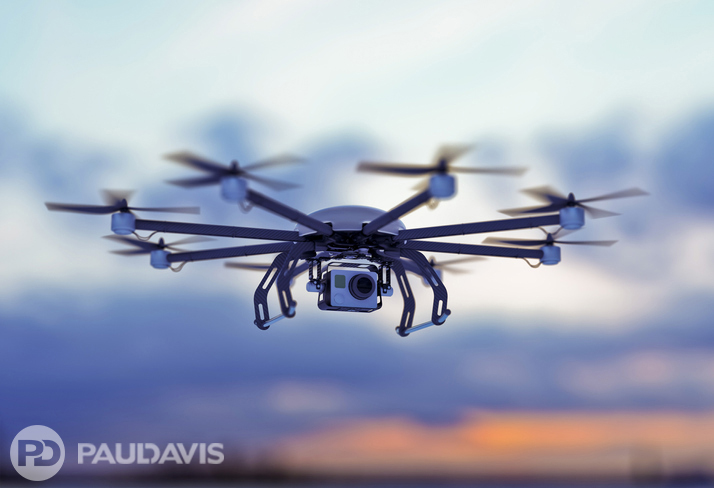
Drones have become far more than fun gadgets built for amusement. They are rugged, highly technical tools hard at work every day making our lives better. These devices, ranging in size from a few hundred grams to over 150 kilograms, have revolutionized wildlife research, allowing study from afar without human presences ruffling a subject’s feathers. They deliver packages. They treat grape vines for pests. They wash windows on high rise buildings. And they perform very useful functions for the restoration industry.
“These unmanned aerial vehicles, as they are technically called, are revolutionizing our work at disaster sites,” says Paul Davis Chief Information Officer Shawn Clark. “The Federal Aviation Administration regulates their use, so a very skilled, practiced and licensed operator has to be at the controls at all times. But in experienced hands, these nimble flying machines support our restoration projects in many, many ways.”
Clark listed six advantages that make drones great partners (as long as you don’t expect conversation):
Quick image and measurement capture. Drones need not wait until improved conditions allow access to a disaster site nor do they require special equipment or vehicles to gain access. They navigate dangerous, unstable or uneven terrain easily. These devices are particularly helpful when surveying large areas.
Better documentation. The images they produce, taken with high-resolution lenses, are packed with information, including GPS data that pinpoints exact locations where images were captured.
Reaching inaccessible locations. Frequently, these devices reach areas that are completely inaccessible through any other means: damaged roofs, unstable debris, poor air quality, steep hillsides and flooded areas.
Improved safety. Because drones access dangerous locations, humans don’t have to, keeping personnel out of harm’s way completely.
Speedy restoration. Faster evaluation supported by abundant, accurate documentation = faster claims filing, more immediate restoration start and quicker project completion.
Lowered cost. Drones accomplish tasks more quickly with fewer people needed to access, measure or document a disaster scene.
Drone adoption is growing rapidly and enthusiasm for these devices is high in many industries. Their applications are more creative by the day: one well-known entrepreneur is dispatching drones to deliver internet connectivity to remote locations. Another is collaborating with local emergency services to deliver defibrillators in response to 911 calls. Bystanders could perhaps take quicker action to save heart-attack victims before emergency medical technicians arrive.
Paul Davis, too, is alert for new ways to deploy these invaluable restoration tools for their commercial customers because This Is No Time for Second Best®.
